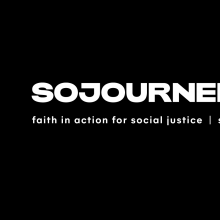Police
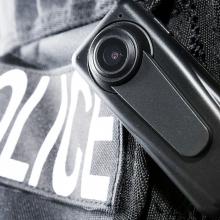
Image via Skyward Kick Productions/Shutterstock.com
In the U.S. the Freedom of Information Act is a law designed to enable Americans to access government information. But, often, the Freedom of Information Act fails to ensure this basic right. For example, in the case of the Laquan McDonald shooting, the Chicago Police Department denied fifteen Freedom of Information Act requests for the video of the shooting to be released. It wasn’t until many members of the community expressed their concern about the video not being shown to the public, and a city judge ruled in their favor, that the video was finally released. It shouldn’t have taken so much effort to get access to what’s rightfully ours.
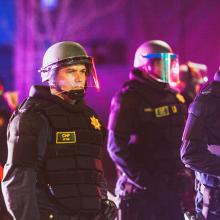
Police in riot gear, Oakland, Calif. Image via Thomas Hawk/Flickr
The Los Angeles Times reports one man critically wounded and at least seven more injured in the protests, which continued for a second night in the face of growing tensions and anger over police handling of the circumstances of Scott's death. Protesters threw rocks and smashed windows, and police officers in riot gear fired tear gas and nonlethal bullets into the crowd.
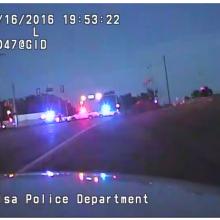
Screenshot, video released by Tulsa police. Image via OklahomaNews9.
On Sept. 19, the police department of Tulsa, Okla., released dashcam footage of a white officer fatally shooting a 40-year-old unarmed black man. Terence Crutcher was shot and killed by Officer Betty Shelby after his SUV stalled on a street. A stun gun was also used on Crutcher by Officer Tyler Turnbough.

Image via O M/Shutterstock.com
Which has ever brought a peaceful future nearer to neighborhoods: weaponized military and surveillance systems, or the efforts of concerned neighbors seeking justice? The United States withholds resources needed for the task of healing the battle scars our country has inflicted on so much of the world. If our fear is endless, how will these wars ever end?

Image via kenkistler/Shutterstock.com
Attorney General Loretta E. Lynch filed a civil rights lawsuit against Ferguson, Mo. after the St. Louis suburb rejected an agreement with the Justice Department that would have reformed their criminal justice system. “Their decision leaves us no further choice,” Lynch said.
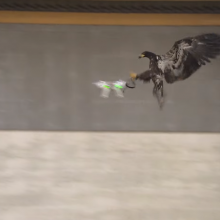
Screenshot via Politie/Youtube
The bald eagle has been the symbol of the U.S. for over 200 years.
But we’ve never put an eagle to as good of a use as the Dutch are now: taking down drones.
In order to remove drones hovering above unauthorized areas, such as airports or political events, Dutch police are training eagles to snatch them out of the air.
We've put a man on the moon. Why haven't we done this yet?

Image via Pigprox/Shutterstock.com
In an abrupt change, the city of Chicago has made public video footage that documents the shooting death of Cedrick Chatman at the hands of Chicago police. The 17-year-old Chatman was shot and killed while running away from police. The officers claim he turned around and pointed a black object at them, an object which turned out to be a black iPhone box.
Cook County state’s attorney Anita Alvarez announced Dec. 7 that there will be no charges in the death of Ronald Johnson.
Ronald Johnson was shot and killed by Officer George Hernandez. According to Alvarez, Johnson resisted arrest and refused to drop a gun he was holding. Dashcam video of the shooting was also released. Officers had purported it shows Johnson holding a gun, but the images — dark and blurry — are inconclusive.
There is no sound on the video.
Alvarez had said she would make her decision based on "whether there was enough evidence to bring charges against the officer," reports the Chicago-Sun Times, and concluded there was not.
Johnson’s mother has sued the city and Officer Hernandez, claiming that her son was not carrying a gun.
Read more here.
Baltimore, like Ferguson, is a parable — a story that can teach us important lessons. It's one in which we should see that we are, for the most part, still missing the most important lessons.
Decades of bad behavior on the part of Baltimore's police force in relation to the black community were brought to light, as in other circumstances of young black men dying at the hands of police. But the parable of Baltimore needs to go deeper.
1. Officers Charged in Freddie Gray's Death, Ruled a Homicide
“In an unexpected announcement Friday, Baltimore lead prosecutor Marilyn J. Mosby said there is “probable cause” to file criminal charges against police officers in the death of Freddie Gray ...”
2. How Biased Is Your Feed?
Via Future Journalism Project Media Lab: A new study indicates that news and information gets more biased as it passes through social networks. … And given that half of Facebook and Twitter users consume news via those networks, our consumption and digestion of such “news” could take on that bias.
3. Nepal Earthquake: Up to 15,000 May Have Died, According to Army Chief
Amid public anger at government response to the massive earthquake and threats of disease, the country’s army chief painted a grim estimate of between 10-15,000 likely deaths in the wake of the weekend’s quake.
4. Lawmaker Considers Blocking Baltimore Protesters’ Food Stamp Benefits
“‘That’s an idea, and that could be legislation,’ [Maryland state legislator Patrick McDonough] said in response to a caller who asked if benefits could be revoked from parents of protesters. ‘I think that you could make the case that there is a failure to do proper parenting, and allowing this stuff to happen—is there an opportunity for a month to take away your food stamps?’”
I enjoy cop shows on television.
My favorite is Blue Bloods, following the “Reagan” family from terrorist threats to homicides to domestic violence.
I can’t imagine what it’s like to be a cop. Perhaps routine marked by bursts of frenzy, some of it life-threatening. One’s hometown seen through the lens of crime, tragedy, and evil. Low pay, high risk.
I like Blue Bloods because it shows upright law enforcement taking “Protect and Serve” seriously and making brave and ethical choices.
These shows are quite unrealistic, of course. Crime doesn’t get solved that easily or snap decisions made that wisely.
I don’t think, however, that I realized until recently how separated from reality those fictional accounts have been. As police shootings of unarmed citizens go viral, as minorities talk of long-standing police brutality, as we watch guards beating prisoners, and as federal law enforcement engages in creepy surveillance, internal corruption, and the arming of local police as military commandos, the veil is lifted.
Now we see in our own American law enforcement the same brutality and power-madness that have marked corrupt societies we supposedly surpassed, from the secret police in Eastern Europe to uniformed thugs in South America.
I find it confusing. Not the discovery that TV isn’t real, but to see how low we have fallen. Has this brutality been the dark side of police work all along?
Early Thursday morning, just hours after the resignation of Ferguson police Chief Thomas Jackson, two officers were shot as they stood guard amidst protests outside the police department in Ferguson, Mo. One officer, a 41-year old from the St. Louis County Police Department, was struck in the shoulder. The other, a 32-year old from nearby Webster Groves Police Department, was hit in the face. Both officers were reported to be in serious, but non-life threatening condition.
As local authorities search for the unidentified shooters, protesters and police have begun to speculate about causes and responsibility.
AS A FORMER reserve police officer who has taught ethics at two police academies, I followed the news very closely after 18-year-old Michael Brown was shot to death by police officer Darren Wilson in nearby Ferguson, Mo. When I saw the military equipment of the St. Louis County Police—especially the sharpshooter on top of an armored vehicle aiming his rifle at the protesters—I said to my wife, “This may turn out to be very, very bad.”
Sen. Claire McCaskill argued in the midst of the protests that St. Louis County should “demilitarize the police response” in Ferguson, telling reporters, “The police response has been part of the problem.”
The militarization of police has been trending over the past few decades. When the thin blue line resembles an occupying force, it exacerbates racial tensions in neighborhoods and communities, making things worse for everyone, including the police.
Some communities are starting to push back. For instance, the city council of Davis, Calif., recently directed its police department to get rid of a mine-resistant, ambush-protected vehicle (worth $700,000) that it had received free from the U.S. military’s surplus program.
WE HAVE AMPLE reason to weep of late: war in Gaza, crisis in Syria, ISIS in Iraq, the slaying of five unarmed black men in one month at the hands of U.S. police officers, and the demise of congressional immigration reform.
Scripture calls us to cross over into the valley of lament at times such as these. Yet most of us are more comfortable on the plateau of rage or the plain of apathy.
I once led a training on lament and racial reconciliation. Twenty college students sat in the living room of a ministry house as I recited a lament from Jeremiah, the “weeping prophet”: “O that my head were a spring of water, and my eyes a fountain of tears, so that I might weep day and night for the slain of my poor people!” (9:1).
I spoke of the impact of racial injustice in our nation and on our campuses. I recounted slave narratives to the students—stories that had brought me to tears privately. Yet, when the last word was read, the students sat silent with glazed eyes staring back at me.
I didn’t get it. The whippings of human beings, the children separated from their mothers and fathers, the hands, feet, and lives lost in the midst of America’s darkest hours—these things happened. How could we not lament?
It’s been said that our politics are often shaped by what we see out the window.
Twenty years ago, if you would've asked me if I thought police treat people fairly regardless of race, I would have confidently said, “Yes” — just like 70 percent of white folks in the recent Pew survey. In fact, 30 years ago, if you would've asked me what I wanted to be when I grew up I’d have said “a policeman.”
I grew up in a small town in Tennessee, which was still very segregated. Growing up, we knew the police officers by name. On more than one occasion, the police saved the day, and countless news stories celebrated the heroism and courage of police officers.
My mom and I used to go on walks together in a park, and I always looked forward to bumping into the officer who patrolled the park. She was tough as nails but always greeted me with an enthusiastic smile and a big bear hug. At the age of ten, she appointed me a “Junior Officer,” and she gave me a “real metal badge.” I felt like I was at the top of the world, and on my way to be officer of the year.
And then my window changed.
Last night, Washington, D.C., residents young and old gathered in the Columbia Heights neighborhood to protest the shooting of Michael Brown, stand in solidarity with those on the front lines of continued protests in Ferguson, Mo., and let our governmant and law enforcement officials know that #BlackLivesMatter. The protest was organized by a Howard University student who hails from St. Louis and "needed to do something" given the reports she received from friends and family on the ground in Ferguson.
About a dozen Sojourners employees were in attendance. Check out the video below with testimony from two protestors who spent some time over the last week in Ferguson.
AFRICAN AMERICANS around the country are finding it is dangerous to call 911. Jack Lamar Roberson’s family in Waycross, Ga., discovered this the hard way when they placed an urgent call to 911 in October 2013 because his fiancée thought that he had taken an overdose of diabetes medicine.
Instead of sending EMTs, the dispatcher sent the police. Within 20 seconds of being in the house, police shot Roberson nine times, with bullets striking his back, arms, chest, and head as he held his arms up in the air. Although he was a veteran, he did not die from bullet wounds at the hands of strangers in a foreign land. Instead, white police gunned him down in his home.
Killings like this—which could be called anti-black hate crimes by police—are far too common. “Operation Ghetto Storm,” a 2012 report by the Malcolm X Grassroots Project, revealed that white police officers, security guards, or vigilantes kill an unarmed black man, woman, or child every 28 hours in the U.S. In 2012, police officers shot 57 people in Chicago—50 were black, two were white. Miami police officers killed seven black men within eight months in 2011. The Houston-based African-American News & Issues headlined an article this spring: “Open Season on Blacks in Texas: Cops Are Shooting First & Not Asking Questions.”
These police killings of black people emerge out of a culture and system of white supremacy. In such a context, police killing of black people is not a black problem. It is an American problem that shreds the curtains of democracy.
DOMINIC WAS 17 years old when the incident occurred. Dressed and ready to go to church, he walked out of his home in the Bronx just a few minutes ahead of his parents. All of a sudden, undercover police officers came out of nowhere, grabbed him, and threw him to the ground. As his parents came outside and discovered this scene, fear gripped them as they screamed to the officers, “What are you doing to my son?” “He fits the description. You stay out of this!” the officers replied. His mother pleaded, “Sir, he hasn’t done anything. He has been with us the whole time.”
While legal and political measures are being undertaken by opposing factions for and against the stop, question, and frisk practices of the New York Police Department, the debate rages. The fact remains, no matter what side you are on, considerable damage has already been done to a generation of African Americans and Latinos (particularly youth), not only in New York City but in other cities that have adopted this model of policing.
According to a recent analysis by the New York Civil Liberties Union, in 2012 “New Yorkers were stopped by the police 532,911 times. 473,644 were innocent (89 percent).” This means that out of more than half a million who were stopped, only 59,267 people were charged with any sort of illegal activity. In addition, 284,229 (55 percent) were African American and 165,140 were Latino (32 percent), most of them law-abiding citizens who were targeted, stopped, questioned, frisked, and found innocent. What is further troublesome is that not all actions conducted by officers were documented, so the actual number of those impacted negatively is even higher.
NEW DELHI — Police in India’s capital used water cannons and canes on peaceful Christian and Muslim leaders Wednesday while they were demanding equal constitutional protections.
Organized jointly by confederations of churches and Muslim groups in India, the demonstrators demanded affirmative action for Dalits (formerly “untouchables”) who have converted to Christianity or Islam.
Only Dalits who have converted to Hinduism, Sikhism, or Buddhism are entitled to affirmative action slots in jobs and educational institutions, among other protections.



